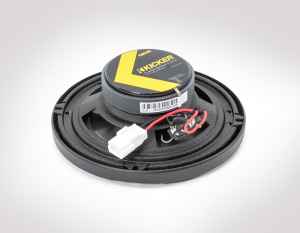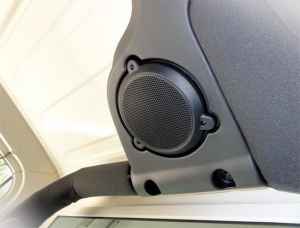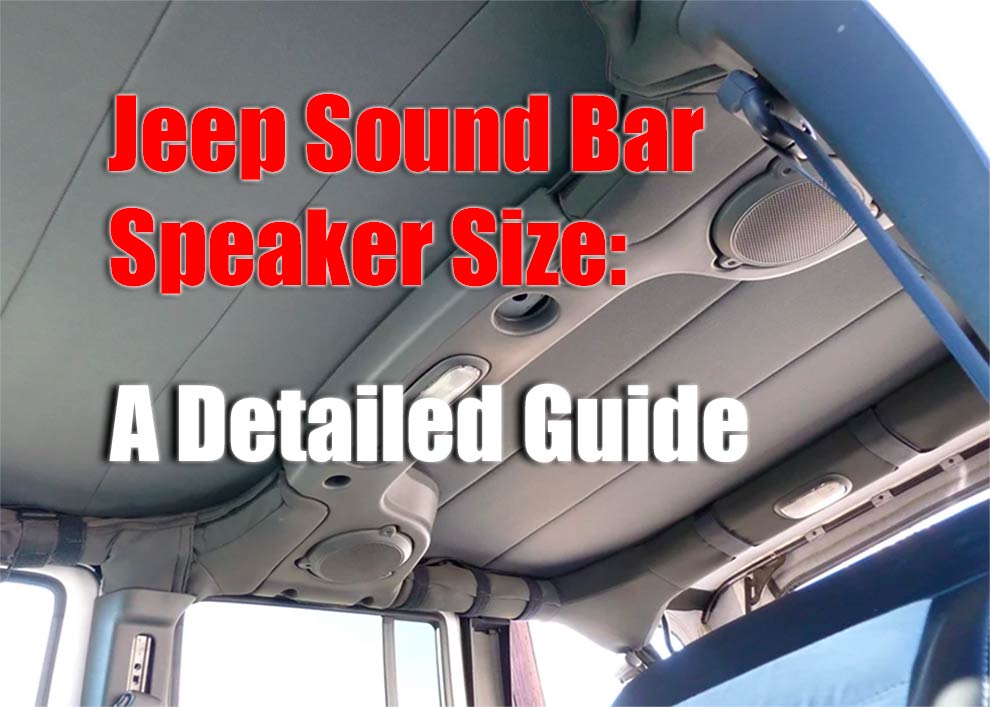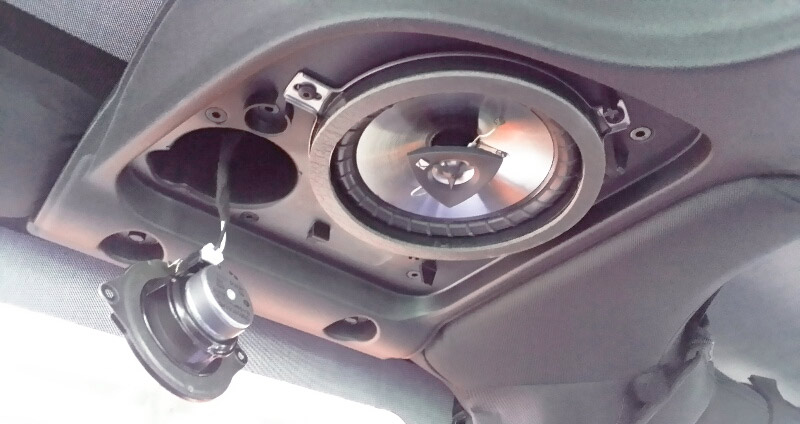We all want to enjoy our music through decent-quality speakers, right? Well, while the stock Jeep sound system is solid, it’s honestly not that great. Besides, soundbar speakers don’t last forever, especially when exposed to natural hazards like humidity and dust. So, if you’re having trouble with the audio, it might be a good idea to save some bucks for an aftermarket replacement.
Third-party speakers will turn the boring Jeep sound bar around and make your off-roading adventures so much more exciting. But wait – how do you figure out the Jeep sound bar speaker size? Is it the same among all Jeep models? How do you make sure you’ve got the right pick? What’s the right power output for a Jeep? I’ve got all the answers in this detailed guide!
Are Jeep Speakers Interchangeable, or Not?
You could say that about most Jeep SUVs a decade ago or so. They shared the same frame, body, and suspension parts. Plus, the infotainment system, volumes, knobs, and even stereo systems were roughly the same. But, that’s not the case anymore. Say, the Grand Cherokee boasts the most advanced infotainment system, and it comes with extras that simply won’t fit the older Wranglers (like the TJ, for example).
This applies to the speakers as well, of course. The best way to ensure compatibility is to focus on the actual soundbar, not the Jeep model. You can have a stock unit or an aftermarket upgrade. The rule of thumb is to find speakers that fit the bar in your Jeep. As we’ll learn next, size plays a key role in this, as there are different standards for different vehicles.
Wrangler TJ, JK, and JL Sound Bar Speaker Sizes

But do remember that bigger doesn’t automatically mean higher quality. For example, JL, the most recent Wrangler, rocks a set of 3.5” sound bar speakers and 4.5” woofers, and they are better in pretty much any regard that the slightly outdated speakers in the previous generations (the JK and the TJ).
What about the Cherokee or the Gladiator?
As for the Cherokee, it all depends on the model year and the size: it can be as small as 2.5” and as big as 6.5”. Grand Cherokee, the “big brother”, packs a premium-quality set of speakers (usually 3-4”). Finally, the recent Gladiator features a 4” sound bar size, and, again, you’ll be pleased by the speakers’ sound and how loud they are. These measurements should help you get started and find the right fit for your vehicle.
What to Look for in New Speakers
Ok, so, by now, we’ve learned that not all Jeep speakers and sound bars are 100% compatible. Next, we checked out common sizes for the most popular Jeeps, including the Wrangler and the Cherokee. Now it’s time for us to learn our way around aftermarket products. The next list includes the most important factors that can make it or break it for a speaker set.
The Power Output

The reason – no consumer-level tweeters will sound decent at peak volume – you’ll hear strong distortion. Besides, the over-the-top performance will have a strong negative effect on your car stereo, the amplifier, and the actual speakers. So, instead of the peak volume, look for the RMS. AKA “Root Mean Square”, it describes the actual volume of the speakers on “safe” levels. The ideal RMS for Jeeps is 50-100dB.
Impedance and Resistance
Don’t worry: we won’t get into complex diagrams or any of that. Instead, let us take a quick look at the impedance. Essentially, it describes the speaker’s ability to resist the current generated by the amplifier. Impedance is measured in OHMs, by the way. Why does this matter, though? Simple: the lower the resistance of the speaker(s), the better the audio quality – that’s how this works.
But, there’s a catch: if you go too low with the impedance, the power output won’t be strong enough. Now, when off-roading, you want the music to be really loud. The same is true for camping. So, get a speaker set with a good balance between volume and quality. For a Jeep sound bar, you’ll find that in the 4-8 OHMs range.
Engineering Quality
Steel (stainless) and aluminum are the perfect materials for any speaker. Chrome, in turn, protects against natural hazards, including rust, dirt, and dust. The surrounding material is also important, and industry-grade rubber has proven to be a reliable choice. And what about the cones? Polypropylene is the most popular material; yet, fiberglass and silk are a bit better.


Add Comment